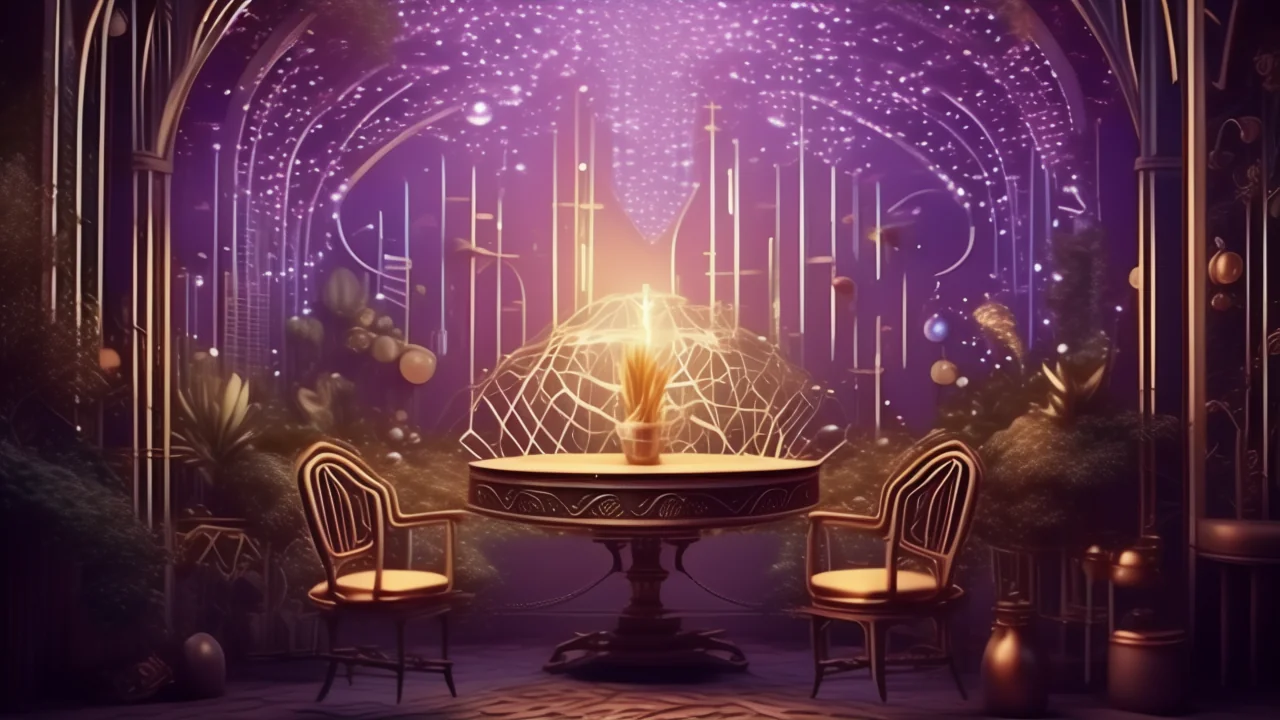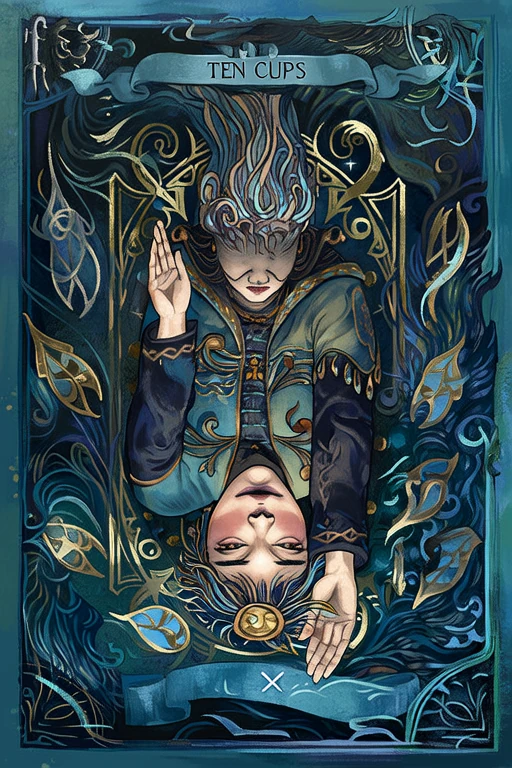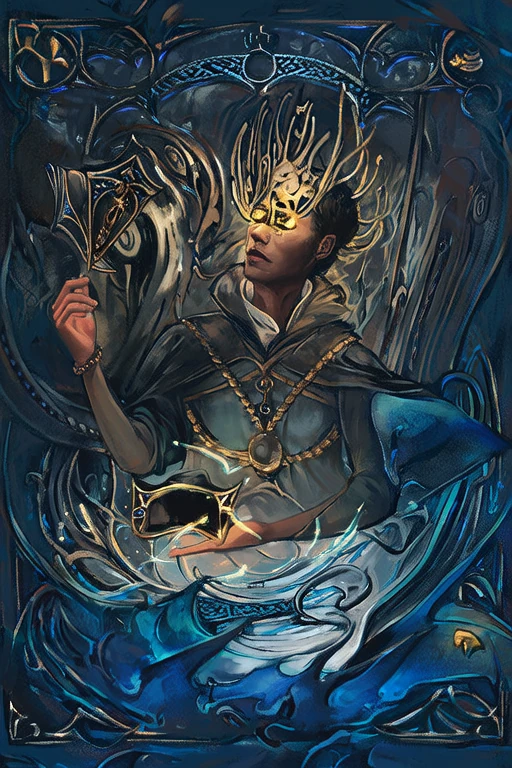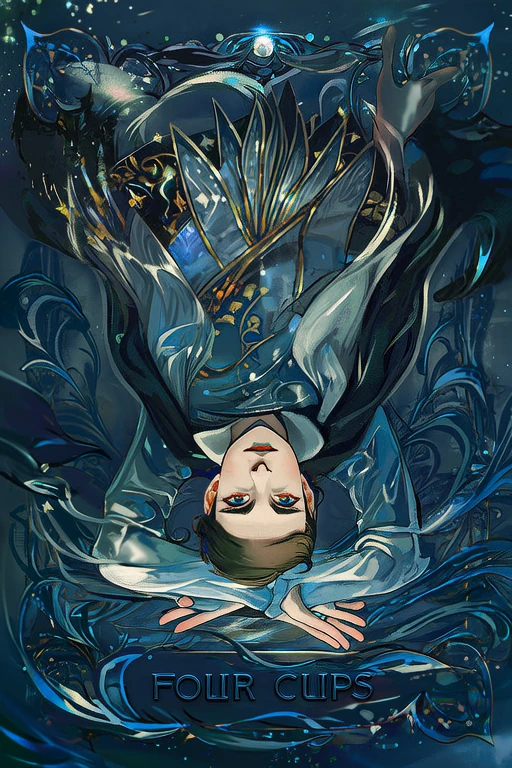
Ten of Cups
Discover the deep meaning of Ten of Cups with our free AI-powered tarot interpretation. Get instant, accurate readings based on advanced tarot knowledge.

Keywords
Upright Meaning
Divine love, blissful relationships, harmony
Reversed Meaning
Disconnection, misaligned values, struggling relationships
Full Interpretation
The Ten of Cups represents divine love, harmonious relationships, and emotional fulfillment.
In-Depth Analysis
📜 Historical Background
The Ten of Cups, known in Chinese as 圣杯十 (Shèngbēi Shí), is one of the most emotionally resonant and spiritually uplifting cards in the Minor Arcana of the Tarot. Its origins trace back to the early development of tarot in 15th-century Europe, particularly in Italy and France, where it was initially used as a playing card before evolving into a tool for divination and esoteric exploration during the 18th and 19th centuries.
In its earliest forms, such as the Visconti-Sforza and Marseille decks, the Ten of Cups was a simple depiction of ten chalices arranged in a structured manner. The imagery was largely symbolic, focusing on the number ten as a representation of completion and fulfillment within the suit of Cups, which governs emotions, relationships, and spiritual matters. Over time, especially with the rise of the Hermetic Order of the Golden Dawn and the Rider-Waite-Smith deck in the early 20th century, the card's symbolism became more elaborate and emotionally evocative.
One of the most iconic depictions of the Ten of Cups comes from the Rider-Waite-Smith deck, illustrated by Pamela Colman Smith under the guidance of A.E. Waite. In this version, a joyous couple stands beneath a rainbow, with ten golden cups suspended in the air in a perfect arc above them. In the background, a modest home and a peaceful landscape symbolize domestic harmony and emotional security. This image has become the standard interpretation for many modern decks and is often associated with familial bliss, emotional fulfillment, and spiritual contentment.
Across various cultures and tarot traditions, the Ten of Cups has maintained its association with emotional and spiritual completeness. In the Thoth Tarot, designed by Aleister Crowley and Lady Frieda Harris, the card is titled 'Satiety' and is linked to the astrological sign of Pisces. This version emphasizes the card's connection to emotional fulfillment and spiritual transcendence, reflecting the more esoteric and mystical interpretations found in occult traditions.
Historically, the card has also been connected to myths and legends that emphasize the quest for emotional wholeness. In some interpretations, it echoes the Arthurian legend of the Holy Grail, representing the ultimate fulfillment of spiritual longing. In others, it reflects the idea of the 'perfect home' or 'heaven on earth,' where love, harmony, and emotional peace reign supreme.
As tarot evolved across different cultures, so too did the visual and symbolic interpretations of the Ten of Cups. From the lush, romantic illustrations of the Victorian era to the minimalist and abstract styles of modern decks, the card continues to inspire feelings of hope, love, and emotional satisfaction. Whether used for divination, personal reflection, or spiritual growth, the Ten of Cups remains a powerful symbol of emotional harmony and inner peace across the tarot world.
Symbolism & Imagery
The Ten of Cups is rich in symbolic meaning, with each element of its imagery contributing to a deeper understanding of emotional fulfillment and spiritual harmony. At the heart of the card is the number ten, which in numerology represents completion, wholeness, and the attainment of a higher state of being. Within the suit of Cups—associated with the element of Water and the realm of emotions—the Ten of Cups signifies the ultimate realization of emotional happiness and familial harmony.
In the classic Rider-Waite-Smith depiction, a couple stands beneath a rainbow, symbolizing hope, promise, and divine blessing. The rainbow is a powerful archetypal symbol found in many cultures, often representing a bridge between the earthly and the divine. It reinforces the idea that the emotional fulfillment represented by this card is not only earthly but also spiritually significant.
Above the couple, ten golden cups are arranged in a perfect arc, symbolizing the圆满 (yuánmǎn), or completeness, of emotional and spiritual life. The cups themselves are often interpreted as representing the ten sephiroth of the Kabbalistic Tree of Life, suggesting that the card is not only about earthly happiness but also about achieving spiritual enlightenment and balance.
In the background, a small house and a serene landscape represent a stable, loving home and a peaceful life. These elements speak to the importance of domestic harmony, familial bonds, and a sense of belonging. The figure on the right is often depicted raising their arms in joy, emphasizing the emotional ecstasy and gratitude that come with true emotional fulfillment.
Color plays a crucial role in interpreting the Ten of Cups. The rainbow contains the full spectrum of colors, symbolizing diversity, unity, and the full range of human emotions. The blue sky and green hills suggest peace and growth, while the golden cups represent spiritual wealth and emotional abundance. Together, these colors create a harmonious and uplifting visual experience that reinforces the card's positive message.
Culturally, the Ten of Cups resonates differently across traditions. In Western esoteric traditions, it is closely linked to the concept of the Holy Grail and the fulfillment of spiritual quests. In Eastern philosophies, particularly those influenced by Taoism and Buddhism, it can be seen as a symbol of inner peace and contentment. In modern psychological interpretations, it represents the achievement of emotional security and the integration of the self.
When the Ten of Cups appears upright in a reading, it typically signifies emotional fulfillment, family happiness, and spiritual contentment. It suggests that the querent has achieved or is on the verge of achieving a deep sense of emotional satisfaction and inner peace.
Conversely, when reversed, the Ten of Cups may indicate emotional disappointment, familial discord, or unmet expectations. It can suggest that the querent is clinging to an idealized vision of happiness that may not align with reality, or that there is a need to reassess emotional priorities and relationships.
The Ten of Cups also connects deeply with other cards in the Major and Minor Arcana. It is often seen as the emotional counterpart to the Major Arcana card The World, which represents completion and fulfillment on a broader life level. In the Minor Arcana, it shares thematic similarities with the Nine of Cups (the 'wish card') and the Ace of Cups (the beginning of emotional journeys), reinforcing its role as a card of emotional culmination and satisfaction.
Overall, the Ten of Cups serves as a powerful reminder of the importance of emotional harmony, familial bonds, and spiritual fulfillment. Whether upright or reversed, it invites the querent to reflect on their emotional state and consider how they can cultivate deeper joy and contentment in their lives.
Psychological Insights
From a psychological perspective, the Ten of Cups resonates deeply with Carl Jung’s concept of archetypes and the collective unconscious. It embodies the archetype of the 'Ideal Family' or the 'Harmonious Home,' representing the universal human longing for emotional security, love, and belonging. This card speaks to the innate desire for connection and the fulfillment that comes from healthy, nurturing relationships. In Jungian terms, the Ten of Cups can be seen as an expression of the Self—the integrated and whole state of being that arises when one has achieved emotional balance and inner peace.
In modern life, the Ten of Cups serves as a guiding light for those seeking emotional stability and meaningful connections. It encourages individuals to cultivate gratitude, appreciate the love and support in their lives, and recognize the importance of family, whether biological or chosen. In decision-making, this card often signals that the best choices are those that align with emotional well-being and long-term happiness. It suggests that the querent should trust their intuition and prioritize relationships and emotional fulfillment over material concerns.
For personal growth and self-awareness, the Ten of Cups offers a powerful reminder to reflect on one’s emotional landscape. It invites individuals to assess the quality of their relationships, identify sources of emotional fulfillment, and address any areas where emotional needs may be unmet. It encourages a deep exploration of what true happiness means on an emotional level and how one can create a life that reflects those values.
In therapeutic and counseling settings, the Ten of Cups can be a valuable tool for exploring emotional healing and family dynamics. Therapists and counselors may use this card to help clients reflect on their sense of belonging, the health of their relationships, and their emotional well-being. It can also be used to guide discussions about setting healthy boundaries, resolving conflicts, and fostering emotional resilience.
In modern spiritual practices, the Ten of Cups is often associated with rituals of gratitude, blessings, and emotional healing. It is used in meditation to cultivate feelings of contentment and to manifest emotional harmony. Many practitioners incorporate the card into affirmations, visualization exercises, and gratitude journals to reinforce a positive mindset and attract loving relationships.
Overall, the Ten of Cups holds profound psychological and spiritual significance. It represents the culmination of emotional growth, the fulfillment of the heart’s desires, and the deep satisfaction that comes from living in harmony with oneself and others. Whether used for self-reflection, counseling, or spiritual practice, this card continues to inspire a sense of emotional wholeness and inner peace.
Correspondences
The Ten of Cups is deeply connected to the element of Water and the astrological sign of Pisces, making it a card of deep emotion, intuition, and spiritual fulfillment. In the esoteric system of the Hermetic Order of the Golden Dawn, this card is associated with the decan of Pisces under the rulership of Venus, emphasizing its ties to love, compassion, and emotional harmony. The influence of Pisces brings a dreamy, empathetic energy to the Ten of Cups, enhancing its themes of emotional unity and spiritual bliss.
Gemstones and crystals associated with the Ten of Cups include rose quartz, which promotes unconditional love and emotional healing; amethyst, which supports spiritual clarity and emotional balance; and aquamarine, which encourages communication and harmony in relationships. These stones can be used in meditation, worn as jewelry, or placed in the home to amplify the card’s positive energies.
Herbs and essential oils that resonate with the Ten of Cups include lavender for peace and emotional healing, chamomile for comfort and relaxation, and ylang-ylang for love and emotional balance. Burning these herbs or diffusing their oils can help create a calming and harmonious atmosphere, especially when working with this card’s energy.
The Ten of Cups is often associated with the season of autumn, particularly the harvest season, symbolizing the reaping of emotional rewards and the culmination of efforts in relationships and personal growth. It also resonates with the evening hours, a time for reflection, gratitude, and emotional connection.
In terms of chakra energy, the Ten of Cups is closely linked to the heart chakra (Anahata) and the crown chakra (Sahasrara). The heart chakra governs love, compassion, and emotional well-being, while the crown chakra connects to spiritual fulfillment and higher consciousness. Balancing these chakras can help align with the energy of the Ten of Cups, promoting emotional harmony and spiritual contentment.
Numerologically, the number ten represents completion and wholeness, reinforcing the idea that the Ten of Cups signifies the fulfillment of emotional and spiritual aspirations. It suggests that the querent has reached a state of emotional maturity and inner peace, ready to embrace the blessings of love, family, and spiritual harmony.
❓ Frequently Asked Questions
### Frequently Asked Questions About the Ten of Cups
**1. What does the Ten of Cups mean in a love reading?** In a love reading, the Ten of Cups generally signifies emotional fulfillment, harmony, and lasting happiness in relationships. Upright, it suggests a loving, stable partnership or family life. Reversed, it may indicate unmet emotional expectations, unresolved family issues, or a need to reassess what you truly desire in a relationship.
**2. Can the Ten of Cups indicate marriage or starting a family?** Yes, the Ten of Cups is often seen as a positive omen for marriage or starting a family. Its imagery of a happy home and emotional unity makes it a strong card for domestic bliss and long-term commitment.
**3. Is the Ten of Cups always a positive card?** While the Ten of Cups is generally a very positive card, its reversed position can indicate emotional disappointment or unrealistic expectations. It’s important to consider the context of the reading and surrounding cards to determine whether the card is encouraging contentment or prompting a reevaluation of emotional needs.
**4. How does the Ten of Cups interact with other cards in a spread?** When combined with cards like The Lovers, it reinforces themes of emotional harmony and deep connection. With the Two of Cups, it suggests mutual love and partnership. However, if paired with challenging cards like the Five of Cups or the Tower, it may indicate that emotional fulfillment is possible but requires healing past wounds or releasing attachments.
**5. What should I do if the Ten of Cups appears in a reversed position?** A reversed Ten of Cups may suggest that you are holding onto an idealized version of happiness that isn’t aligned with reality. It encourages you to examine your emotional expectations, address unresolved issues in relationships, and seek inner fulfillment rather than relying solely on external validation.
### Reading Techniques and Practical Interpretation For beginners, the Ten of Cups can be interpreted as a sign of emotional satisfaction and familial harmony. When reading for others, it’s important to ask clarifying questions to understand the querent’s current emotional state and whether they feel fulfilled in their relationships or home life.
In professional readings, the Ten of Cups can be used in spreads focused on emotional well-being, relationship dynamics, and personal fulfillment. A simple three-card spread (past, present, future) can help identify emotional patterns and guide the querent toward greater emotional clarity.
To deepen your understanding of the Ten of Cups, consider journaling about your emotional needs, reflecting on your family dynamics, or meditating with the card to receive intuitive insights. Using affirmations such as 'I am emotionally fulfilled and surrounded by love' can help align with the card’s energy and manifest its positive vibrations in daily life.
Practical Readings
Love Reading – Free • Online • AI • Instant • Accurate
In love, Ten of Cups upright: Divine love, blissful relationships, harmony. Reversed: Disconnection, misaligned values, struggling relationships.
Career Reading – Free • Online • AI • Instant • Accurate
For career, Ten of Cups upright: Divine love, blissful relationships, harmony. Reversed: Disconnection, misaligned values, struggling relationships.
Yes‑No Reading – Free • Online • AI • Instant • Accurate
As a quick yes‑no: upright tends toward “yes”, reversed leans “no”—interpret within your question’s context.
FAQ
What does Ten of Cups mean in tarot?
Ten of Cups represents divine love, blissful relationships, harmony. This card encourages The Ten of Cups represents divine love, harmonious relationships, and emotional fulfillment.
What is Ten of Cups reversed meaning?
When Ten of Cups appears reversed, it signifies disconnection, misaligned values, struggling relationships. Consider areas that may require adjustment or release.
Is Ten of Cups a positive card?
Ten of Cups is generally considered a neutral to positive card, representing divine love, blissful relationships, harmony.
What should I do if I draw Ten of Cups?
If you draw Ten of Cups, focus on divine love, blissful relationships, harmony. Align actions with the card’s upright energy.
How do I interpret Ten of Cups in a love reading?
In love readings, Ten of Cups suggests divine love, blissful relationships, harmony in relationships. Consider how divine love and blissful relationships apply to your situation.
What does Ten of Cups mean in a love reading?
In love, Ten of Cups points to divine love, blissful relationships, harmony when upright and disconnection, misaligned values, struggling relationships reversed. Reflect on relational balance & authenticity.
How is Ten of Cups interpreted in career?
For career, Ten of Cups upright highlights divine love, blissful relationships, harmony while reversed warns of disconnection, misaligned values, struggling relationships—adjust planning & execution.
What is the financial meaning of Ten of Cups?
Financially, Ten of Cups suggests divine love, blissful relationships, harmony potential; reversed indicates disconnection, misaligned values, struggling relationships—use prudent pacing.
Is Ten of Cups a yes or no card?
Ten of Cups is generally a context-dependent when upright; reversed leans toward hesitation or NO—apply to the nuance of your question.
References
References
- Encyclopaedia Britannica – Tarot
Historical overview and cultural context of tarot cards.
- Wikipedia – Tarot
General reference on tarot history, structure, and usage.
- Biddy Tarot – Tarot Card Meanings
Widely cited interpretations and learning resources.
- Labyrinthos – Tarot Card Meanings
Educational articles on major and minor arcana.



